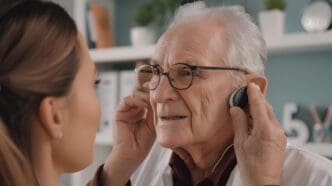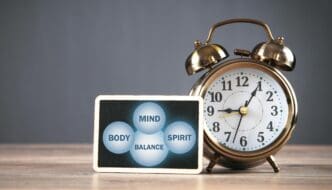Understanding breast health is crucial for early detection of cancer. Monthly self-examinations play an essential role in recognizing any unusual changes. This guide aims to educate and empower readers in maintaining breast awareness. Although not a substitute for professional screenings, self-exams offer insight into your own body.
Being familiar with how your breasts feel on a regular basis can help you notice changes that might require medical attention. This practice, termed breast self-awareness, is recommended by health professionals. Regular self-checks can aid in early detection, although they are not foolproof and should supplement, not replace, mammograms.
Understanding Visual Exams
A visual exam is best done in front of a mirror. Start with your arms relaxed at your sides, observing for any changes in breast shape, size, or skin texture. Notice differences in nipple color or texture, and look for any new vein patterns. Then, raise your arms above your head and see if any changes are more apparent. Slightly bending forward can provide additional perspective. These steps help in identifying irregularities that are visible.
Conducting a Standing Exam
The standing exam is often easiest to perform in the shower when the skin is wet and slippery. Use the pads of your three middle fingers to examine every part of each breast. Follow circular motions, moving from the outer edges to the center. Repeat with varying pressure levels—light, medium, and firm—to feel different layers of tissue. This method helps discover lumps or knots that might not be felt otherwise.
In addition to circular motions, use an up-and-down and wedge pattern from the outer breast to the nipple. Cover your entire chest area to ensure no spot is missed. This thorough approach is key for effective self-examination.
Lying Down Exam Techniques
This exam should be done with your body flat.
Begin by placing a pillow beneath your right shoulder and raise your right arm above your head. Use your left hand to apply varying pressure across your breast and underarm. Repeat the circular and wedge movements used in the standing exam. It’s crucial to cover areas from the underarm to the collarbone, ensuring no part is overlooked. Gently squeeze your nipple to check for lumps or unusual discharge. Repeat these actions for your left breast, ensuring consistency.
The lying down position allows the breast tissue to spread evenly over the chest, making it easier to identify any irregularities. Thoroughly checking under your arm and around the chest bone ensures a comprehensive exam.
Symptoms to Watch For
Not all breast cancer cases involve a lump.
Be alert to changes like unexplained alterations in breast shape, skin color, or unusual shrinkage. Also, watch for dimpling, puckering, or an increase in pores. Other symptoms include a burning sensation or pain without a clear cause. These changes might indicate something is wrong, prompting medical consultation.
Nipple and areola changes can include inward turning, color shifts, or unusual discharge. Skin texture alterations, such as scaliness, can also be warning signs. Early detection of these symptoms is significant for effective treatment.
Examining Lymph Nodes
Lymph node changes are early indicators.
Check for lumps or thickening in the underarm and collarbone areas. Swelling or skin thickening might also occur. These signs can suggest lymph node involvement, which should be discussed with a healthcare provider. Such changes can be misleading without cancer being present, so professional assessment is vital.
Remember, swollen lymph nodes can result from infections or recent vaccinations, including the COVID-19 vaccine. This can sometimes lead to unnecessary concerns, hence the importance of timing mammograms correctly post-vaccine.
Routine self-checks can prevent misinterpretation of normal breast lumps as cancerous. This practice aids in recognizing significant changes that require medical expertise.
Conclusion
Breast self-examinations are vital for awareness, though not a replacement for professional advice. They complement medical screenings and contribute to early cancer detection.
Regular awareness through self-exams empowers individuals to take control of their health, providing a proactive approach to personal wellness. Early detection remains pivotal.
Incorporating self-exams into your routine can be empowering. Remember, these checks are part of a broader health strategy. Awareness leads to early intervention.








